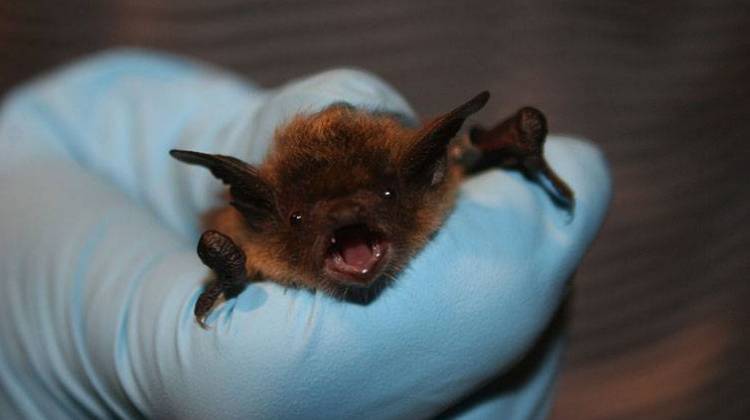
A U.S. Fish and Wildlife Service biologist holds little brown bat.
U.S. Fish and Wildlife Service/Ann FroschauerIn Indiana, a bat’s usual territory is in the woods or in caves. But, as fall comes around and the temperatures drop, these nighttime flyers can find their way into homes and buildings.
“Bats are on the move and they’re looking for places to roost that are stopover roosts on their way to their winter habitats," said Joy O’Keefe is the Director of the Center for Bat Research at Indiana State University.
She says that bats aren’t a major threat to humans, but should be handled carefully in order to protect the human and the bat. Not killing the bat is important because she says Indiana bats face increasing conservation issues.
The biggest issue is habitat loss, followed by a devastating disease called white nose syndrome - which has killed about 20 percent of the bat population in south central Indiana. And to top it off, in northern Indiana, collisions with wind turbines are having an effect on bat populations.
“We were out there looking for birds and started finding dead bats under the turbines. That coupled with the fungus coupled with habitat loss, bats are really getting it on all sides," O'Keefe said. "So that’s why I say, we don’t want humans to be another issue for bats.”
 DONATE
DONATE






 View More Programs
View More Programs


 Support WFYI. We can't do it without you.
Support WFYI. We can't do it without you.